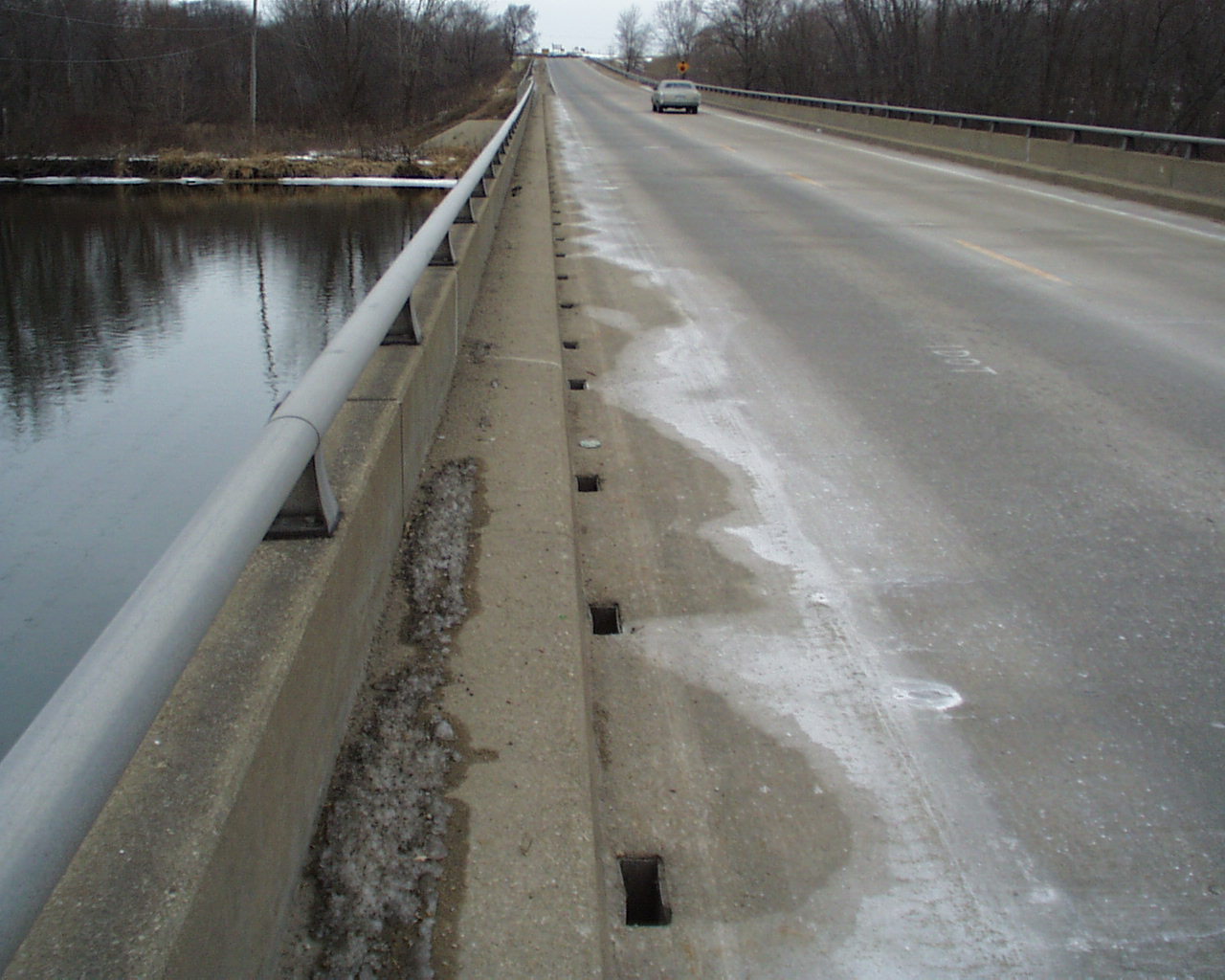
© UnknownRoad salt pollution
Minneapolis - Many urban streams have become salty enough to harm aquatic life, largely because of salt used for deicing roads in the winter, according to a new government study released Wednesday.
The U.S. Geological Survey studied urban streams and groundwater for levels of chloride, a component of salt, in 20 states spanning from Alaska to the Great Lakes and Northeast.
It found chloride concentrations above federal recommendations designed to protect aquatic life in more than 40 percent of urban streams tested. The highest levels were measured in those streams during the winter - as much as 20 times the federal guidelines - when salt and other chemicals are commonly used for deicing.
The problem was less serious in groundwater, and fewer than 2 percent of the drinking-water wells sampled had chloride levels higher than federal standards for human consumption. Chloride levels generally were much higher in urban than rural areas.
High chloride levels can slow plant growth, impair reproduction and reduce the diversity of organisms in affected waters. It also can affect the taste of drinking water drawn from them.
Matthew Larsen, the federal agency's associate director for water, said road safety is a top priority when state and local officials decide to use salt.
"And clearly salt is an effective deicer that prevents accidents, saves lives, and reduces property losses," Larsen said in a statement accompanying the report. "These findings are not surprising, but rather remind us of the unintended consequences that salt use for deicing may have on our waters."
For those reasons, Larsen noted, transportation officials continue to develop innovations that reduce the need for road salt without compromising safety.
The study found the rising levels were consistent over the last two decades with more use of road salt and the expansion of road networks and parking lots that get deicing.
Some of the highest concentrations of chloride were found in two creeks in the Twin Cities and four creeks in suburban Chicago, but Lincoln Creek in Milwaukee exceeded the federal guidelines the most out of all the streams cited in the study.
The findings are consistent with several other studies that blamed road salt, and its increased use, for water quality problems in streams and aquifers.
A University of Minnesota study published in
Science of the Total Environment last year linked increasing salinity in Twin Cities lakes to increased use of road salt in their watersheds. Another study by some of the same researchers this year found those waters were getting saltier because most of the salt was being retained in the watersheds instead of being flushed down the Mississippi River.
And a 2005 study in the
Proceedings of the National Academy of Sciences said chloride concentrations were increasing in many surface waters in the northeastern states at a rate that threatened to render them undrinkable and toxic to freshwater life.
Eric Novotny, a researcher who worked on both the Minnesota studies, said certain species, mostly bugs at the beginning of the food chain, are typically the first affected by rising chloride levels. Either they're killed outright or it affects their reproduction, reducing biodiversity among less tolerant species, which can have consequences farther up the food chain.
Besides road salt, other sources of chloride include wastewater treatment plants, septic systems, water softeners, farms and more salt leaching from landfills, as well as natural sources.
The states included in the study were Alaska, Washington, North Dakota, Nebraska, Iowa, Illinois, Indiana, Michigan, Minnesota, Wisconsin, Ohio, Pennsylvania, Rhode Island, Vermont, New Hampshire, New Jersey, New York, Connecticut, Massachusetts and Maine.
The study looked at data from 1,329 wells in 19 states and 100 surface water basins in 15 states. Because those two data sets don't perfectly overlap, the number of states is actually 20, said John Mullaney, the study's lead author.
Reader Comments
to our Newsletter